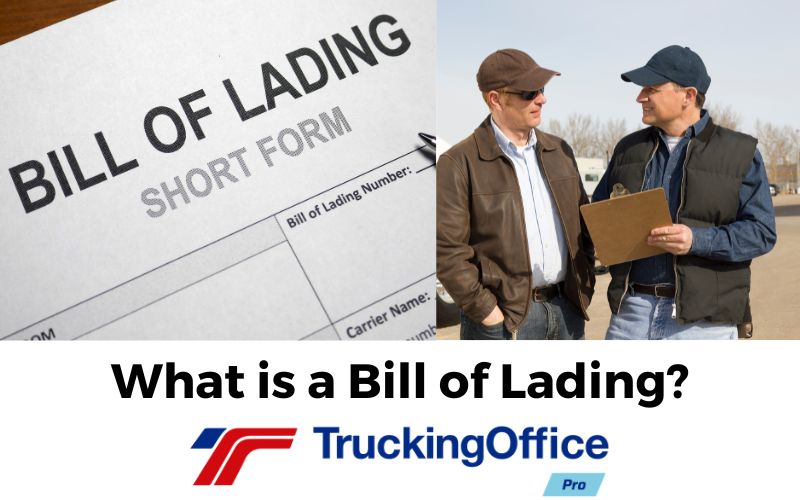Every business transaction has paperwork. We can’t avoid it. The bill of lading in the transportation industry is a key piece of paperwork that documents what a trucker hauls and where and when it’s delivered. We often call a bill of lading a BOL.
Bill of lading paperwork starts at the beginning of the shipping process. It will list the details of the load
- the quantity of product
- where it was picked up and where it will be delivered
- names of the shipper, receiver, and carrier
- any special instructions.
Essentially, the bill of lading is a contract between the shipper and the carrier. It’s a legal document, so it must be handled properly.
Who Signs a Bill of Lading?
The bill of lading can also serve as a document of title. That means it is a record of the transfer of ownership from the shipper to the recipient. So signatures on the BOL are critical, just like signatures on a contract to purchase a car or house.
Representatives of the shipper, the receiver, and the carrier may be expected to sign a bill of lading. Because it’s a legal document, truckers have to take very strict care of it. Plus, the BOL is necessary to prove that the delivery was made. The signature of who received the freight is important if there’s any question of where the load was dropped.
Like many types of paperwork, we see the BOL sometimes in an electronic format. In fact, a picture of the signed bill of lading is often acceptable instead of mailing the original to the shipper for proof of delivery with the invoice.
Invoices and Bill of Lading
Back before complete trucking software programs existed, truckers often held onto their invoices to the end of the month. They’d head home and type up an invoice and send the signed bill of lading as record of the delivery.
That’s where things sometimes when sideways. The wrong BOL sent with an invoice? That messed up two payments, maybe permanently. I’m sure that truckers would stop at the library or post office back in the day to make copies for their records just because this happened.
Today, with power trucking software like TruckingOffice PRO, invoices can be created in a truck cab in the freight lot. There’s no need to go home and type everything up with TruckingOffice PRO. When you create the dispatch, the invoice will have all the same data. And the bill of lading?
Welcome to the 21st century. Instead of hard copies, we now send images of the signed BOLs.
FileSafe
TruckingOffice PRO has FileSafe, safe storage for documents and images on our servers. This system keeps your information accessible when you need it to send your invoices. Instead of a complicated system of taking a picture and sending it to yourself and then to the shipper, FileSafe lets you upload the picture of the signed bill of lading to invoice and keeps it for you. Just attach the BOL image to your invoice. No more delayed payments because of a lost bill of lading!
Have you ever lost a bill of lading? How long did it take you to get paid?
TruckingOffice PRO works for you
TruckingOffice makes running a trucking business easy. Paperwork used to be a problem for owner-operators. Now, with TruckingOffice PRO trucking software, you’ve got control of your trucking company. Your cash flow, profitability, and business growth are available at the tips of your fingers on any device, smartphone, tablet, laptop, or desktop. All you need is WIFI to access your secure data to manage your trucking business.
- Know your expenses to see how to make your business more profitable.
- Track your vehicle maintenance so you don’t have to worry about DOT or FMCSA audits.
- Make smart decisions about which loads to take.
You’ll never regret using TruckingOffice Pro to run your trucking business. We’ll give you a free trial to discover the power of the tool that will drive your transportation business to success. Sign up now!







Recent Comments